Kraków 2012-03-20
Państwowe Zakłady Lotnicze – Wytwórnia Sprzętu Komunikacyjnego – Mielec.
1957r.-1959r. Część 3.
PZL S-4 Kania 3. 1957 rok.
Na początku lat pięćdziesiątych inż. Eugeniusz Stankiewicz opracował samolot szkolny przeznaczony do szkolenia pilotów i holowania szybowców oznaczony, jako PZL S-3 Kania. Samolot ten został zbudowany w 1951 roku, ale nie został jednak dopuszczony do eksploatacji, a zbudowany prototyp stojący na lotnisku Aeroklubu Warszawskiego uległ ostatecznie zniszczeniu. Jednak w 1956 roku, samolotem tym zainteresowała się Wytwórnia Sprzętu Komunikacyjnego w Mielcu. Projekt zmodyfikowano, a nowy samolot otrzymał oznaczenie PZL S-4 Kania 2. Prototyp ten został oblatany w dniu 2 września 1957 roku.
Następnie zbudowano kolejny prototyp oznaczony, jako PZL S-4 Kania 3, który posiadał powiększone usterzenie pionowe. Prototyp ten został oblatany w dniu 19 września 1958 roku. Rozpoczęto również budowę kolejnego prototypu oznaczonego, jako PZL S-4 Kania 4, który został ukończony dopiero w 1964 roku, w Lotniczych Zakładach Naprawczych w Krośnie. Po zbudowaniu w WSK Mielec drugiego prototypu zrezygnowany z dalszej budowy samolotów tego typu, gdyż zaniechano w Polsce produkcji silników M 11, które to miały być użyte do napędu samolotu. Ostatecznie zbudowano trzy prototypy samolotu PZL S-4 Kania.
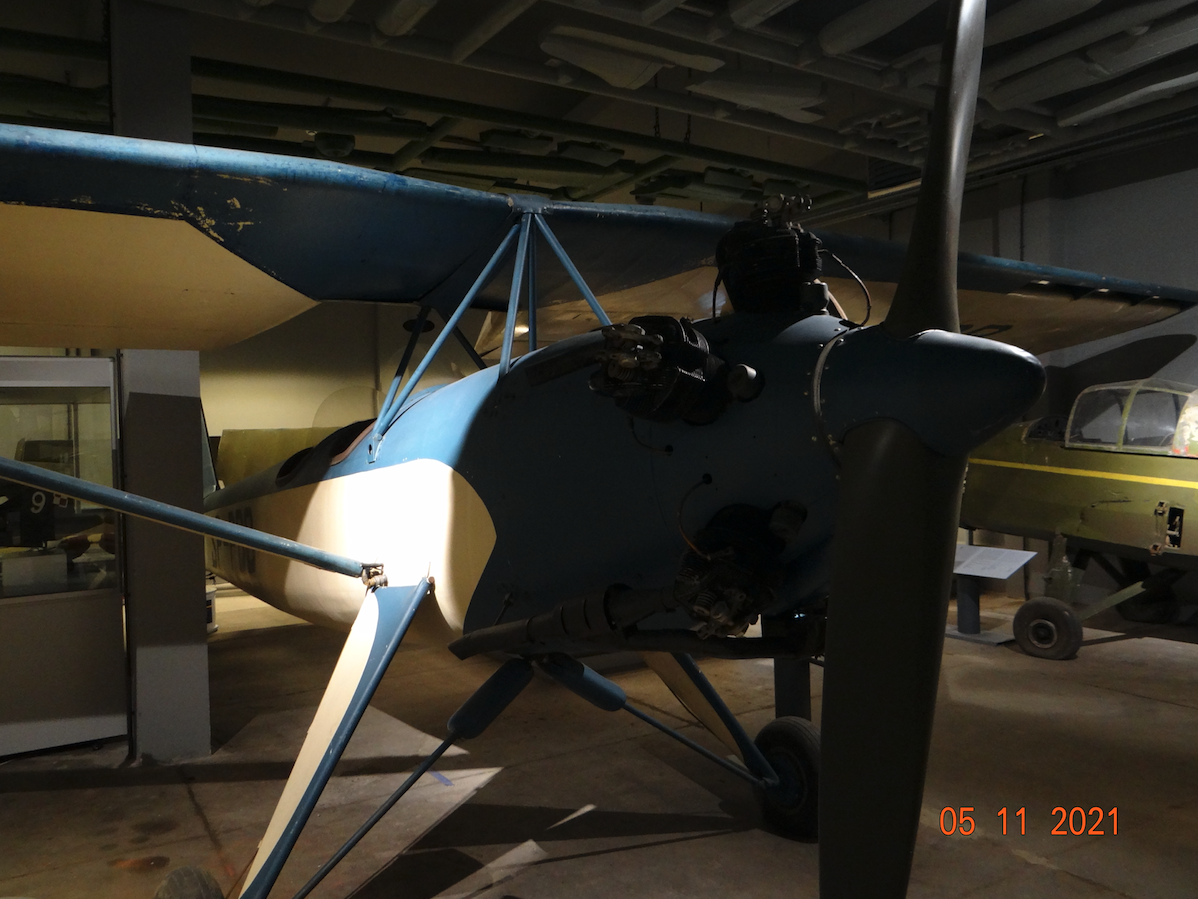
PZL M-1.
Od 1956 roku, w biurze konstrukcyjnym założonym przy PZL WSK Mielec opracowywano własne samoloty. Ich los był różny, ale zwykle nie przekraczał etapu budowy prototypu. Właśnie w 1956 roku, przystąpiono do prac nad samolotem oznaczonym PZL M-1 (Mielec konstrukcja nr 1). Inżynier Stanisław Jachyra opracował samolot treningowy i akrobacyjny, jednomiejscowy, dolnopłat, o konstrukcji metalowej, z wciąganym podwoziem. Nie zbudowano prototypu i samolot pozostał jedynie na papierze.
Mikrus MR-300 samochód osobowy.
Mikrus z założenia miał być tanim, masowym autem. Ta jedna z nielicznych Polskich konstrukcji samochodowych powstała nieco przypadkowo. Pod koniec 1956 roku, władze postanowiły wykorzystać moce produkcyjne zakładów lotniczych WSK Mielec i WSK Rzeszów i uruchomić produkcję samochodów osobowych. WSK Rzeszów opracował dokumentację silnika, a Mielec zajął się podwoziem i nadwoziem przyszłego mikro-auta. Silnik był dwucylindrowy, dwusuwowy oparty na konstrukcji silnika stosowanego w motocyklach WSK. Na Krajowej Naradzie Motoryzacyjnej na początku 1957 roku, pokazano projekty, a w dniu 22 lipca 1957 roku, zaprezentowano w Warszawie pierwsze prototypy. Nowe autko otrzymało nazwę Mikrus MR 300 (MR od Mielec, Rzeszów). Pod koniec roku była gotowa pierwsza seria.
Zainteresowanie Mikrusem było bardzo duże. Wysokie koszty wytwarzania nie pomogły stworzyć podwalin pod masową, indywidualną motoryzację. Nie uruchomiono produkcji wielkoseryjnej, która pozwoliłaby znacznie obniżyć cenę. Wysoka cena auta nie pozwoliła na realizację tych ambitnych zamierzeń. Mikrus kosztował 50 000 złotych, czyli około 50 średnich ówczesnych pensji. Za samochód Warszawa płacono 120 000 złotych. W latach 1957r.-1960r. wyprodukowano zaledwie 1 728 sztuk samochodów Mikrus.
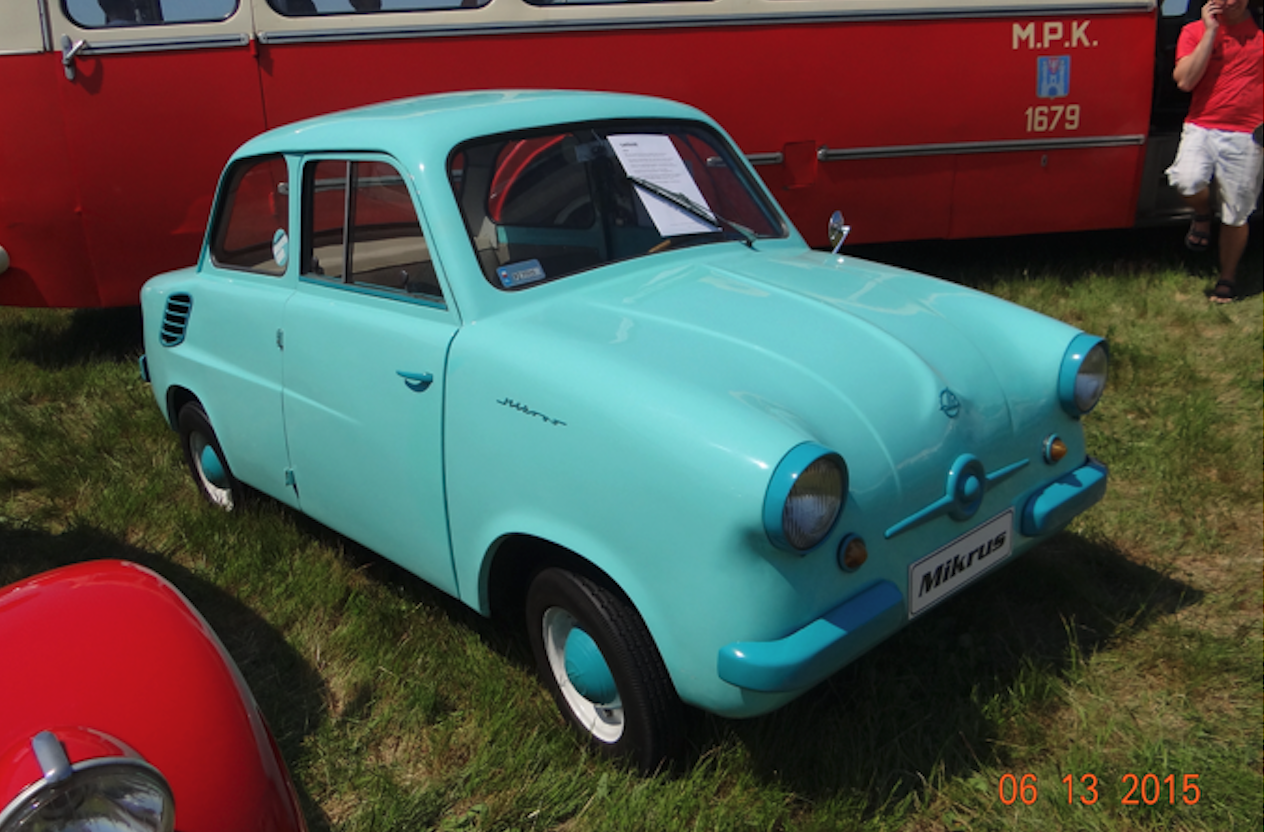
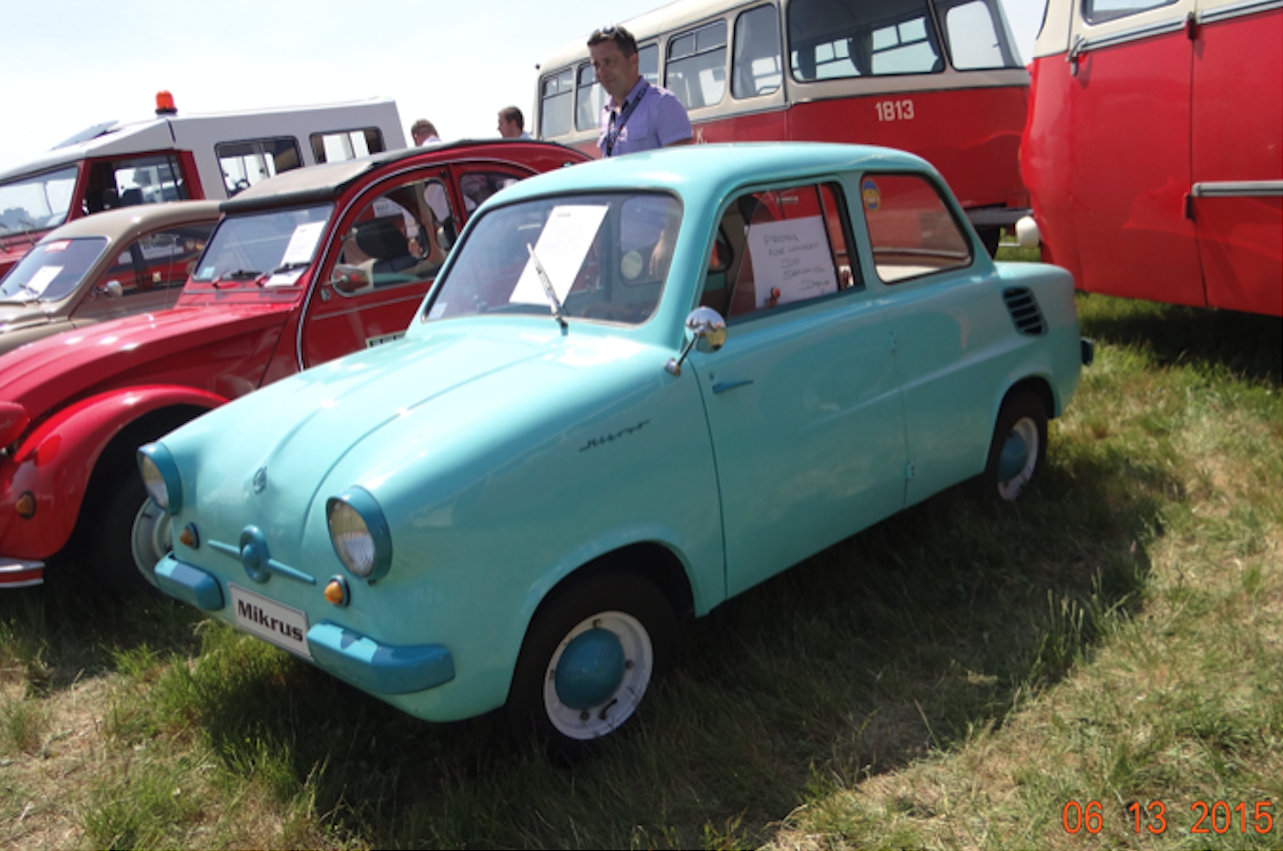
PZL M-2/M-5. 1958 rok.
W 1958 roku, inżynier Stanisław Jachyra próbował kontynuować projekt PZL M-1 opracowując samolot dwumiejscowy szkolno-treningowy. Samolot oznaczono PZL M-2. Zbudowano prototyp, który otrzymał rejestrację SP-PAC. Pierwszy lot, w dniu 26 czerwca 1958 roku, wykonał Tadeusz Gołębiewski. Próbowano także rozwinąć program opracowując samolot M-5. Wszystkie prace projektowe przerwano w 1960 roku.
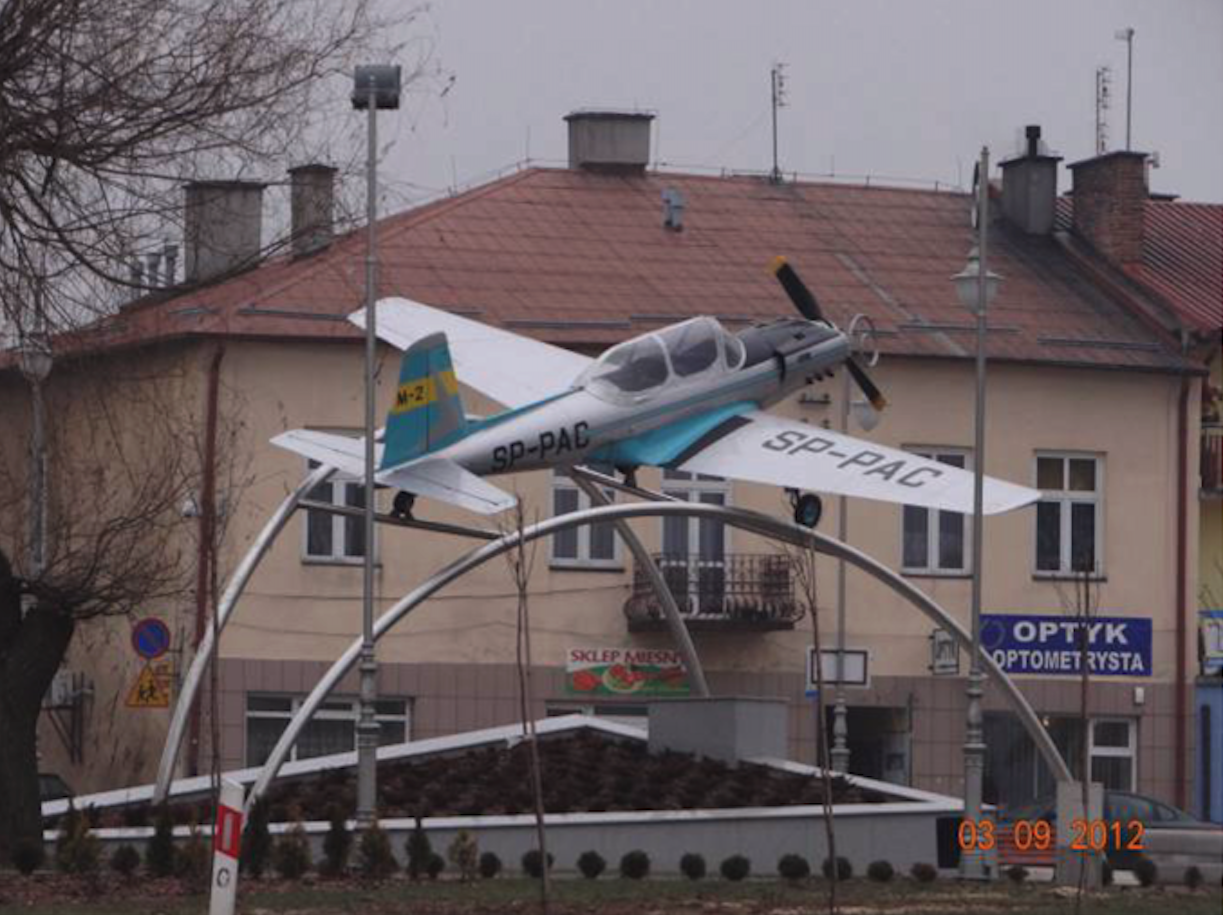
Opis zdjęcia: W pobliskim miasteczku Radomyśl Wielki, w centrum na Rynku stoi na postumencie samolot PZL M-2 rejestracja SP-PAC. 2012 rok. Zdjęcie Karol Placha Hetman.
Lim-5/6 bis samolot szturmowy.
W 1957 roku, rozpoczęto w Polsce program opracowania własnego samolotu szturmowego. Ponieważ moskale nie prowadzili prac nad samolotami szturmowymi, w Polsce zdecydowano się na modernizację myśliwca Lim-5. Bodźcem do modyfikacji było zapoznanie się z wymaganiami na nowoczesny samolot myśliwsko-szturmowy opracowany przez sztab NATO w 1954 roku. Po szczegółowej analizie okazało się, że Lim-5 jest bliski spełnienia tych wymagań. Modyfikację samolotu CF (Lim-5), oznaczono kryptonimem CM. Na początku 1958 roku, w Mielcu pod kierunkiem inż. Feliksa Borodzika rozpoczęto prace nad modelem Lim-5 M. Z racji tego, że samolot Lim-5 był licencyjną wersją sowieckiego samolotu MiG-17, a także z powodu panujących ówcześnie realiów politycznych, w dniu 27 września 1958 roku, do Moskwy na konsultacje udało się dwóch konstruktorów z mieleckiego biura badawczo-rozwojowego. Tam to w wyniku kilku spotkań, w tym także z udziałem samego Artioma Mikojana przeanalizowano planowane prace modyfikacyjne.
W celu przyspieszenia modernizacji wprowadzano zmiany stopniowo. Wojsko dostarczyło do przebudowy samolot 1C 10-30, a kilka miesięcy później 1C 16-01. Na początku 1958 roku, powstał samolot CM-I. Prototyp o numerze fabrycznym CM-10-30 został oblatany 2 lipca 1959 roku. Pilotem był pan Zbigniew Słonowski. Po odbyciu prób pierwszego etapu, bez zatwierdzenia i nie czekając na zakończenie lotów przygotowano produkcję seryjną. Badania w locie trwały w okresie 1959 – 1960.
Nieco później niż CM-I (CM 10-30) powstał projekt CM-II. W samolocie tym wprowadzono zdwojone koła podwozia głównego i owiewko-zbiorniki przy kadłubie przed płatem. Na tym etapie samolot CM-II nazwano Lim-5 M. W dniu 28 grudnia 1959 roku, oba prototypy określane już oficjalnie, jako Lim-5 M, przebazowano na lotnisko polowe i tam poddano je testom. Celem tych testów było określenie, czy osiągnięto założone efekty taktyczno-techniczne. Wyniki były pozytywne. Zdwojone koła zapewniały całkowite uzależnienie myśliwca od betonowych pasów. Niegroźne okazały się nawet pęknięcia w czasie lądowania jednej z opon. Spadochron skracał dobieg o 250 m. Nieco gorzej wyglądała sprawa startu. Rozbieg wydłużył się o 40 %, co było wynikiem zmiany aerodynamiki skrzydła. Nie przejęto się jednak tym, gdyż w odwodzie zostawały rakiety startowe, których ostatecznie nie przetestowano. Badania te przesądziły o skierowaniu maszyny do produkcji.
W 1960 roku ruszyła produkcja seryjna samolotów myśliwsko-szturmowych oznaczonych Lim-5 M. Pierwszy samolot Lim-5 M nr 1F 01-01 wykonał pierwszy lot w dniu 30 listopada 1960 roku. Do dnia 10 maja 1961 roku zbudowano 60 samolotów w 3 seriach produkcyjnych. Z czasem wszystkie te samoloty przebudowano do standardu Lim-6 bis.
Produkcja samolotów Lim-5 M nie oznaczała zakończenie dalszych prac modernizacyjnych. Było to związane z projektem CM-II. Podstawowym tematem tego projektu był nadmuch sprężonego powietrza na klapy skrzydłowe. Celem było uzyskanie większej skuteczności klap. Analiza wykazała, że aby system był w pełni efektywny należ zastosować usterzenie poziome typu płytowego. Jednak takiego usterzenia nigdy nie zbudowano.
Prace prowadzono na znanym nam już egzemplarzu CM 10-30. Pierwsze próby klap z nadmuchem były zachęcające. Konkretne rozwiązanie testowano od stycznia 1961 roku. Samolot otrzymał oznaczenie Lim-5 M-II. Silnik przystosowany do nadmuchu oznaczono Lis-5 M. Powietrze do nadmuchu poprowadzono od silnika rurą ułożoną wewnątrz skrzydła i wyposażono ją w liczne dysze. Jednak z czasem pojawiły się kłopoty. Dnia 7 stycznia 1961 roku na samolocie po raz pierwszy wystąpił pompaż. Dopiero w lipcu 1961 roku udało się pozytywnie rozwiązać problem montując na układzie zawory zwrotne. Po próbach państwowych, dnia 29 marca 1962 roku, dalsze próby z nadmuchem przerwano z powodu zbyt małych korzyści i zbytniego utrudnienia w eksploatacji.
W 1960 roku wojsko przekazało do prób dodatkowo samolot 1C 19-04. Egzemplarz CM 16-01 w pełni skompletowany zatwierdzono, jako wzorzec programu CM-II i nadano mu oznaczenie Lim-5 M-II.
Bezpośrednio po zakończeniu produkcji samolotu Lim-5 M, w maju 1961 roku, jeszcze przed wykonaniem pełnych prób samolotu Lim-5 M-II (CM 16-01) zbudowano serię 40 egzemplarzy, którym ostatecznie nadano oznaczenie Lim-6. Silniki zmieniły oznaczenie z Lis-5 M, na Lis-6. Samoloty nosiły numery od 1J 04-01 do 1J 04-40. Na marginesie należy przypomnieć, że egzemplarz CM 16-01 był wielokrotnie przebudowywany.
Lim-6 otrzymał oprócz instalacji nadmuchu na klapy i spadochronu umieszczonego u nasady usterzenia, wiele innych drobnych zmian. Np. dodatkowe boczne chłodzenie silnika, które miało być wstępem do celowości opracowania bocznych wlotów powietrza. Jednak w takiej postaci samolot Lim-6 nigdy nie został przejęty przez wojsko. Samoloty po czasie poddano przebudowie.
Część z maszyn Lim-6 nieprzejętych przez wojsko posłużyła do dalszych prób. Były to między innymi; 1J 04-02, -03, -04, -05. Nadchodzące z jednostek informacje z eksploatacji samolotów Lim-5 M i prowadzone badania wymusiły zmiany. W dniu 24 kwietnia 1962 roku odbyła się narada komisji do spraw samolotów Lim-6. Zwrócono uwagę na pogorszony pilotaż z owiewko-zbiornikami i małą efektywność nadmuchu na klapy. Postulowano rezygnację z tych rozwiązań. Na początek zlikwidowano owiewko–zbiorniki. Samoloty z owiewko-zbiornikami miał grubsze skrzydło. W locie stawiał większy opór i wzrastało zużycie paliwa. Dodatkowo wraz z wyczerpywaniem się paliwa ze zbiorników przesunięciu ulegał środek ciężkości. Główny cel – wzrost zasięgu nie był tak znaczny.
Dłużej utrzymywało się podwozie z kołami zdwojonymi. Jednak wymagały one owiewek, które pogarszały własności lotne. Próby wykazały drgania i wahania samolotu w locie. Na dodatek malało znaczenie korzystania z lotnisk gruntowych, dlatego postanowiono zrezygnować z podwójnych kół. Zlikwidowano nadmuch na skrzydła. Na samolocie pojawiły się natomiast dodatkowe wysięgniki-węzły dla uzbrojenia. Dnia 19 czerwca 1962 roku rozpoczęto próby samolotu 1C 19-04. Dotyczyły one różnych wariantów uzbrojenia. Próby zakończono w dniu 6 sierpnia 1962 roku, po wykonaniu 63 lotów. Pilotem był Zbigniew Słonowski. Stwierdzono dobre właściwości w locie, szczególnie z uzbrojeniem Mars-2 na wewnętrznych węzłach.
W dniu 25 czerwca 1962 roku, MON zatwierdziło założenia programu CMR, czyli wersji szturmowo-rozpoznawczej. Jak wspomnieliśmy wyżej, niepowodzeniem zakończyły się próby różnych zasobników rozpoznawczych montowanych pod skrzydłami, dlatego ostatecznie pozostawiono aparaty fotograficzne montować wyłącznie pod kadłubem. Rozwiązanie to testowano w okresie od czerwca do sierpnia 1962 roku. Na marginesie wspomnimy, że pierwszym samolotem Lim-5 wyposażonym w aparat fotograficzny AFA-39 był egzemplarz 1C 13-18, a prace prowadzono w 1959 roku. Pierwsze testy uzbrojenia wykonano 28 sierpnia 1962 roku, kiedy to prototyp Lim-6 bis CM 10-30 użył bomb FAB-250, OFAB-100 oraz n.p.r. S-5.
W dniu 13 września 1962 roku zapadły wiążące decyzje. Zdecydowano o przebudowie wyprodukowanych Lim-6 do standardu Lim-6 bis, z opcją zbudowania 70 nowych maszyn do końca 1963 roku. Na 1964 rok zaplanowano zbudowanie dodatkowych 56 samolotów w wersji typowo rozpoznawczej Lim-6 R. Ten ostatni plan nie został zrealizowany, gdyż podjęto produkcję szkolno-treningowych TS-11. Postanowiono więc, że samoloty Lim-6 bis serii V i VI zostaną wyposażone w aparat fotograficzny AFA-39 umieszczony pod kadłubem. Proponowano nawet nazwę Lim-6 bis R lub Lim-6 R, ale z tego pomysłu zrezygnowano.
W dniu 7 listopada 1962 roku, zatwierdzono ostateczną już wersję samolotu szturmowego nazwaną Lim-6 bis. W dniu 5 grudnia 1962 roku rozpoczęto próby fabryczne, które trwały do 16 kwietnia 1963 roku. Z początkiem 1963 roku ruszyła przebudowa samolotów Lim-6 do wariantu Lim-6 bis. Właśnie tych wcześniej wyprodukowanych, a niedostarczonych wojsku. Pierwszy samolot 1J 04-07 opuścił WSK Mielec 23 marca 1963 roku. Od podstaw zbudowano jeszcze 70 samolotów, w dwóch seriach, V i VI. Ostatnim był egzemplarz 1J 06-40, zbudowany 25 lutego 1964 roku.
Do wersji Lim-6 bis przebudowano wszystkie samoloty Lim-5 M. Prace te przeprowadzono w LZR-4 w Bydgoszczy. Później przekazano do jednostek wojskowych jeszcze 1J 16-01, będący eksperymentalnym CM 16-01 (15 czerwiec 1965 roku) oraz 1J 04-41 (30 września 1969 roku). Niestety, egzemplarz 1J 04-41 okazał się pechowy. W dniu 19 listopada 1971 roku, na tym samolocie zginął porucznik pilot Antoni Wiciński. Cześć Jego Pamięci !
W dniach od 15 kwietnia 1964 roku do 27 czerwca 1964 roku, przeprowadzono próby państwowe samolotu. Zwrócono uwagę na kilka drobnych usterek i zlecono usunięcie ich. Samolot typu Lim-6 bis oficjalnie przyjęto na uzbrojenie w dniu 14 września 1964 roku, kiedy to zatwierdzono protokół z prób państwowych.
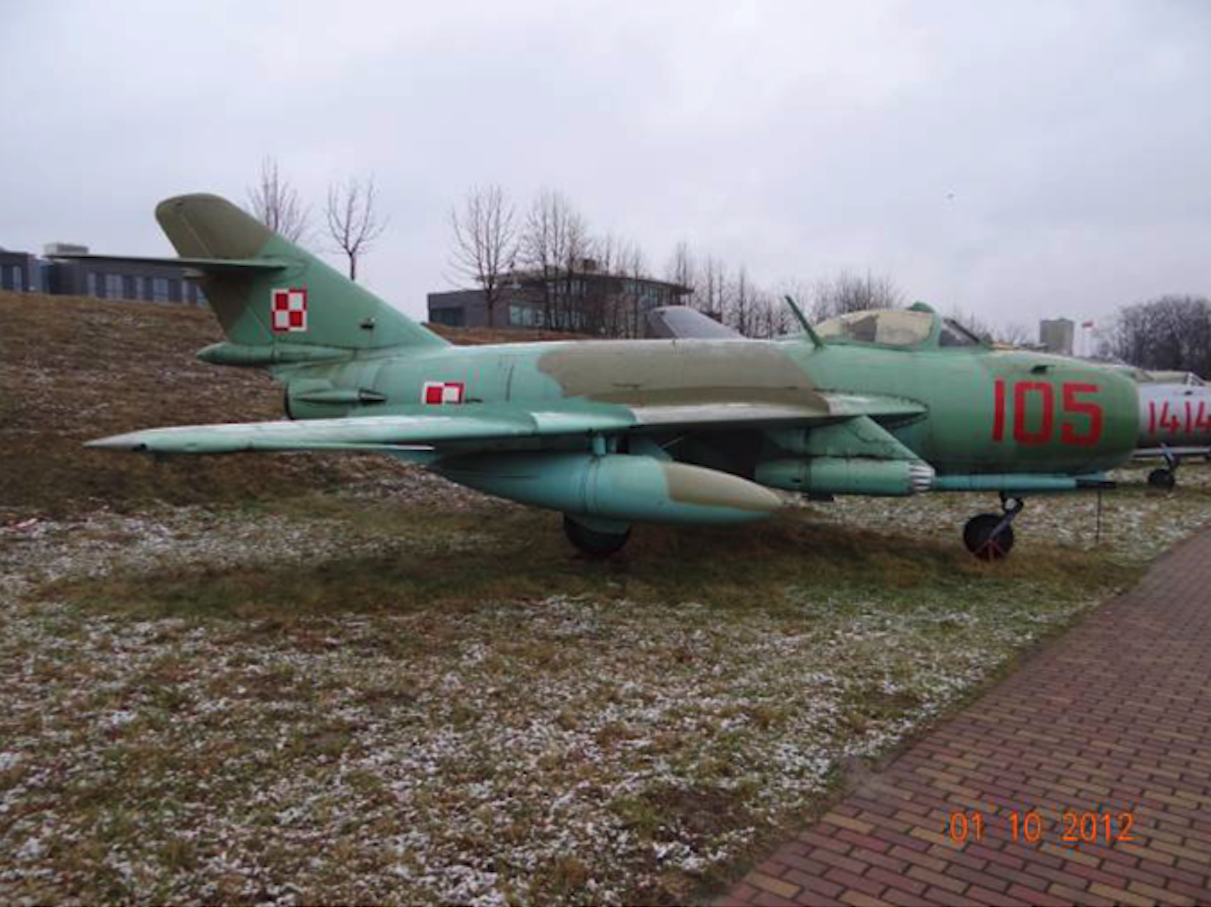
Lim-5 P. 1959 rok.
Myśliwiec MiG-17 PF to samolot zdolny do wykonywania zdań w nocy i w trudnych warunkach atmosferycznych z powodu zamontowania stacji radiolokacyjnej. Samoloty MiG-17 PF sprowadzone do Polski należały do wczesnej serii produkcyjnej. Były wyposażone w stację radiolokacyjną Izumrud RP-1. Do produkcji seryjnej wybrano jednak wzór z późniejszej serii produkcyjnej ze stacją radiolokacyjną RP-5.
Na początku 1959 roku zakłady w Mielcu uruchomiły produkcję licencyjną MiG-17 PF, pod oznaczeniem Lim-5 P. Pierwszy egzemplarz o numerze fabrycznym 1D-01-01 opuścił zakład 18 stycznia 1959 roku. Po oblocie skierowano go do Modlina. W latach 1959-1960 zbudowano w 6 seriach produkcyjnych 129 samolotów. 40 sztuk z nich wysłano do NRD. Ostatni egzemplarz 1D 06-41 powstał 29 grudnia 1960 roku. Zasadnicza produkcja trwała 24 miesiące, a średnie tempo produkcji wyniosło 6 maszyn na miesiąc.

PZL M-3 Pliszka szybowiec.
PZL M-3 Pliszka to szybowiec treningowo-akrobacyjny konstrukcji metalowej. M-3 był pierwszą konstrukcją zaprojektowaną w PRL o konstrukcji całkowicie metalowej. W 1957 roku przedstawiono pierwszy projekt pod nazwą M-3 Pliszka, opracowany przez zespół pod kierownictwem inż. Zdzisława Żoka, a w obliczeniach aerodynamicznych wspomagany był przez Szybowcowe Zakłady Doświadczalne w Bielsku-Białej. We wrześniu 1958 roku przystąpiono do montażu pierwszych elementów szybowca. W dniu 20 marca 1959 roku pierwszy prototyp szybowca o numerze SP-2064 został oblatany przez inż. pil. Sławomira Makaruka. Z powodu małego wydłużenia skrzydła i słabych osiągów, porównywalnych do szybowców z początku 50-tych lat, Pliszka nie weszła do produkcji. Dalsze wersje rozwojowe Pliszki mogły posłużyć do opracowania budowy dwumiejscowego metalowego szybowca szkolno-treningowego. Ostatecznie zbudowano tylko 4 egzemplarze tego szybowca.
PZL M-7. 1959 rok.
W 1959 roku, biuro konstrukcyjne z Mielca przystąpiło do bardzo odważnego projektu. Opracowania naddźwiękowego samolotu szkolno-treningowego. Na czele zespołu stanął inżynier Anatoliusz Inowolski (?). Samolot miał mieć konstrukcję metalową i układ czystej delty, średniopłat. Kabina dwumiejscowa w układzie tandem. Samolot przypominał francuski Mirage I. Wykonano makietę drewnianą w zmniejszonej skali i przekazano ją do Warszawy do Instytutu Lotnictwa, gdzie miano przeprowadzić badania. W 1960 roku program zarzucono.
PZL M-9 Ziemowit.
Samolot szkolno-treningowy z napędem turboodrzutowym PZL M-7 nie był jedyną konstrukcją tego typu, jaką próbowano opracować w Mielcu. Inna grupa konstruktorów (Stanisław Jachyra, Adam Borowski i Marek Augustyniak) podjęła się opracowania samolotu szkolno-treningowego, metalowego o napędzie turboodrzutowym, z wciąganym podwoziem. Konkurent do samolotu TS-11 Iskra. Samolot otrzymał oznaczenie PZL M-9 Ziemowit. Prace projektowe trwały w okresie 1959 – 1960 i nie wyszły poza projekt.
PZL M-8 szybowiec.
Także w 1959 roku, w Mielcu inna grupa konstruktorów przystąpiła do pracy nad szybowcem PZL M-8 Pelikan. Prace prowadzili inżynierowie Zdzisław Żok i Andrzej Kowalski. Szybowiec miał być wyczynowy, dwumiejscowy, konstrukcji metalowej, przeznaczony głównie do zaawansowanego szkolenia. Wykonano modele szybowca oraz makietę kabiny naturalnej wielkości kompletnie wyposażoną.
PZL M-10.
Jeszcze jeden program podjęto w Mielcu w 1959 roku. Był to projekt samolotu transportowo-wielozadaniowego. Maszyna miała zabierać na pokład w wersji pasażerskiej do 18 osób. Konstrukcja metalowa. Przewidywane wersje; pasażerska, towarowa, rolnicza, przeciw pożarowa, sanitarna, desantowa, fotogrametryczna, geofizyczna, inne. Bez wątpienia miał to być konkurent samolotu An-2. Prace projektowe przerwano w 1960 roku.
Opracował Karol Placha Hetman
